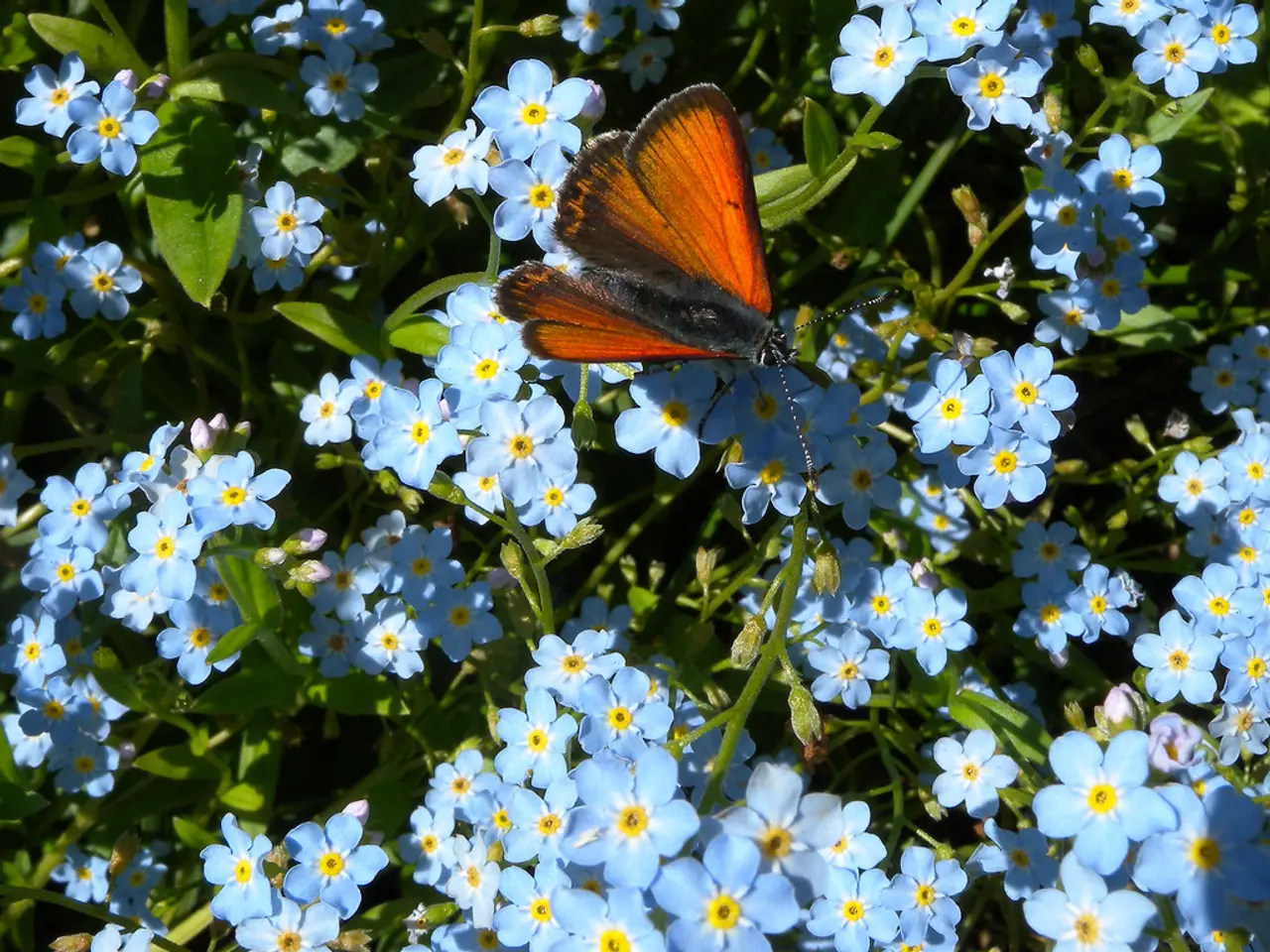Sun-adoring Blooms Continuously Radiate Intense Hues Throughout Summer Regardless of Garden's Withering
Heat-Tolerant Perennials With Long Blooming Seasons: A Gardener's Guide
Are you looking for plants that can withstand the heat and still provide a stunning display of colour throughout the summer? Look no further! Here are some perennials that are perfect for USDA zones 3 to 9, offering a long bloom season, heat tolerance, and nectar richness to attract pollinators.
Butterfly Weed (Asclepias tuberosa)
Butterfly Weed, a native milkweed species, is a must-have for any garden. It attracts monarch butterflies (milkweed host) and blooms showy, bright orange clusters of flowers from late spring through summer. This drought-tolerant plant thrives in full sun with well-drained, sandy or rocky soil, making it ideal for pollinator and wildlife gardens.
Yarrow (Achillea millefolium)
Yarrow is another heat-loving perennial that blooms all summer long. It's drought-tolerant and thrives in full sun and well-drained soil. A favourite among pollinators, yarrow is also adaptable to poor urban soil conditions.
Rudbeckia (Black-Eyed Susan)
Blooming mid-summer to frost, Rudbeckia is heat and drought tolerant. It grows in full sun with dry to moderately moist soil, making it an attractive choice for pollinator gardens.
Coral Bells (Heuchera)
Coral Bells produce flowers late spring to early summer and have colourful foliage that tolerates heat if in partial shade. Prefers rich, well-draining soil and benefits from watering during dry spells.
Marjoram (Origanum majorana)
Marjoram is a fragrant herb with pink flowers, suited for dry, sunny areas with sandy soils. Hardy in warmer zones but may need mulch to protect in colder zones.
Hydrangea (Hydrangea spp.)
Hydrangeas can be grown in zones 3-9, preferring morning sun and rich, well-draining soil. They need consistent moisture in warmer zones and provide a long bloom period with large clusters of flowers.
Western Sunflower (Helianthus occidentalis)
Blooming midsummer through early fall, Western Sunflower thrives in full sun and provides nectar for wildlife. Good for borders and erosion control.
Gardening Tips for Zones 3-9
- Light: Most heat-loving perennials require full sun (at least 6 hours daily), though some like Coral Bells do better with some afternoon shade in warmer zones.
- Soil: Well-draining soil is essential; many tolerate poor or sandy soils, but organic matter improves performance and bloom length.
- Watering: Establish plants with deep watering, then many are drought tolerant but may need supplemental watering during prolonged dry spells, especially in higher zones.
- Mulching: Use mulch to conserve moisture, suppress weeds, and protect roots in winter, especially for marginally hardy plants like marjoram.
- Fertilizer: Apply balanced fertilizer at planting and during growing season as needed, especially for hydrangeas.
- Maintenance: Deadhead spent blooms (e.g., Rudbeckia) to extend bloom time; prune and remove old growth to encourage fresh growth.
- Pollinator Support: Include native milkweed (butterflyweed) to support monarch butterfly caterpillars; choose nectar-rich flowers like yarrow and rudbeckia to attract bees, butterflies, and hummingbirds.
- Site Selection: For xeric gardens, prefer plants like butterflyweed, yarrow, marjoram, and rudbeckia. For native plant gardens, butterflyweed and Western sunflower are excellent.
This selection meets your criteria for perennials with long bloom seasons, heat tolerance, nectar richness, support for pollinators, and suitability across a wide USDA zone range. Adjust watering and shade exposure based on local microclimates within zones 3 to 9 for best results.
Many cultivars of Purple coneflower offer new shapes and colours, such as red, orange, and yellow. Butterfly Weed is drought-tolerant and works well in pollinator gardens, xeric gardens, native plant gardens, or in a perennial border.
These heat-tolerant perennials can enhance your home-and-garden lifestyle, providing colour and supporting pollinators throughout the warmer months. Consider incorporating Butterfly Weed, Yarrow, Rudbeckia, Coral Bells, Marjoram, Hydrangea, and Western Sunflower in your garden, as they bloom profusely and can thrive in USDA zones 3 to 9. Embrace smart gardening practices such as tracking local microclimates, providing full sun (or partial shade for Coral Bells), well-draining soil, and proper watering to cultivate a stunning home-and-garden display.




